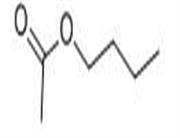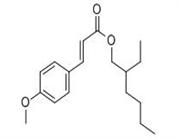jessie606
M-chloroperoxybenzoic acid
Melting point 69-71 °C (lit.)
Density 0.56
Storage conditions 2-8 ° C
Morist Powder
Color White
Water solubility insoluble
BRN 608317
Strong oxidizing agent - contact with combustible material may cause fire. May be shock or heat sensitive. Incompatible with organic materials, strong reducing agents.
CAS Database 937-14-4 (CAS DataBase Reference)
NIST Chemical Information 3-Chloroperbenzoic acid (937-14-4)
EPA Chemical Information Benzenecarboperoxoic acid, 3-chloro-(937-14-4)
M-chloroperoxybenzoic acid use and synthesis
Chemical properties White powdery crystals. Melting point 92-94 ° C (decomposition). Almost insoluble in water, soluble in ethanol, ethers, soluble in chloroform, dichloroethane. It is stable to heat and has an annual decomposition rate of 1% or less at room temperature. The rate of decomposition increases in the liquid state.
Use This product contains 80%-85% of m-chlorobenzoic acid peroxide, and the rest is m-chlorobenzoic acid. It is widely used in cyclization reactions, Baeyer-Villiger reaction, N-oxidation reaction and S-oxidation reaction. It can be used as an oxidizing agent for fine chemical products such as synthetic medicines and pesticides; in addition, it is sometimes used as a bleaching agent.
Use as an oxidant, bleach, etc.
Use It is widely used in cyclization reactions such as steric reaction of carbon-carbon double bonds; Baeyer-Villiger oxidation reaction, such as reaction of carbonyl compound with peroxyacid to form ester; N-oxidation reaction, such as cytosine, cytidine The reaction can obtain N-oxides in yields of 21.4% and 41%, respectively. It can also be used as an oxidizing agent for fine chemicals such as synthetic medicines and pesticides; and sometimes as a bleaching agent.
Production method In a polyethylene container, add 1.5g magnesium sulfate heptahydrate, 36g sodium hydroxide, 360ml water, 90ml 30% hydrogen peroxide, 450ml dioxane and ice cubes, reduce the temperature to 15 ° C, add under vigorous stirring 52.5 g of m-chlorobenzoyl chloride, then add ice to maintain the temperature below 25 °C. After 15 minutes of reaction, 900 ml of 20% cold sulfuric acid was added. After standing, the organic layer was separated, filtered, and the filtrate was evaporated to give a solvent (high vacuum distillation) to give 51 g of 3-chloroperbenzoic acid.
Category Oxidizer
Explosive hazard characteristics Explosive by thermal decomposition; Corrosive
Flammability hazard characteristics Flammable; flammable in combination with reducing agent, ammonium, organic matter, acid, and combustibles
Storage and transportation characteristics The warehouse is ventilated and dried at low temperature; it is stored separately from organic matter, reducing substances, combustibles and strong acids.
Extinguishing agent water, sand, carbon dioxide

 China
China






